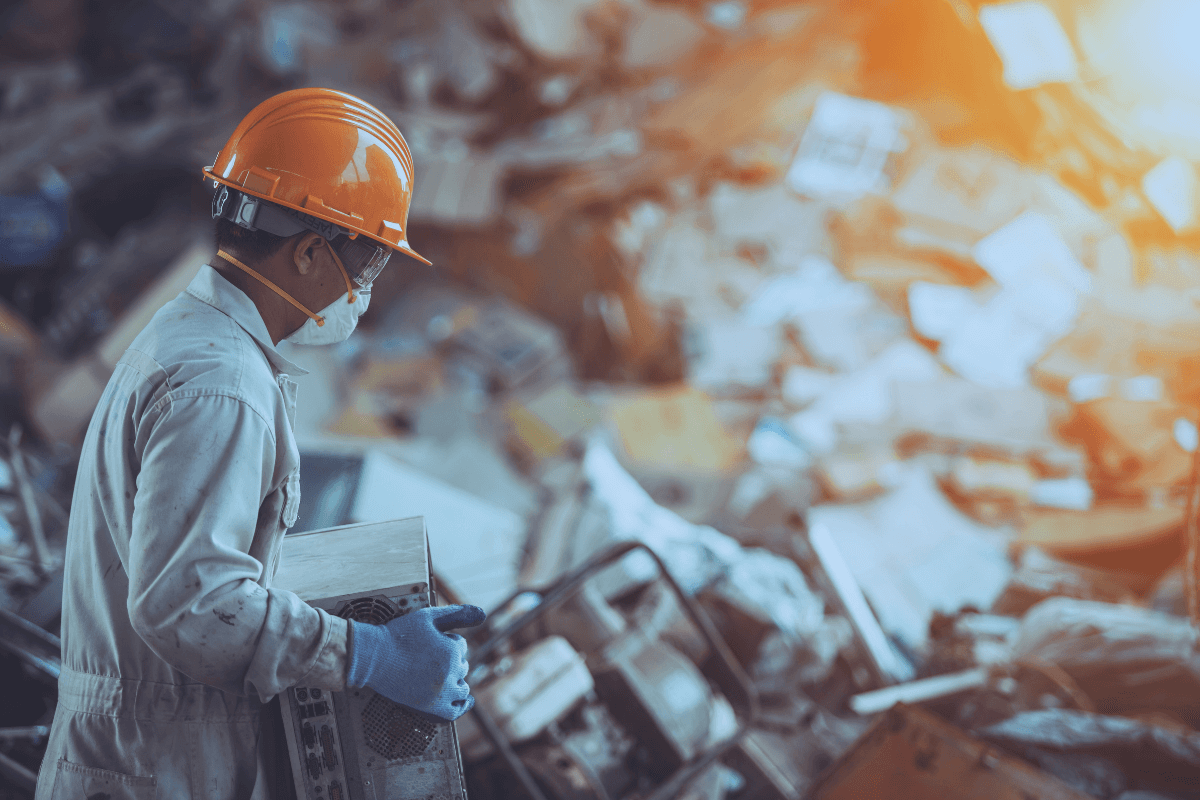
A Mountain with Many Faces
The rapidly growing mountain of e-waste from discarded electronic devices is both high and impressive. Events like the end of Windows 10 support significantly contribute to this increase, causing the mountain to grow further. E-waste includes all electronic devices that can no longer be used or repaired and contains both valuable metals like gold, silver, and copper, as well as hazardous substances such as lead, mercury, or cadmium.
We All Contribute
The e-waste mountain is growing five times faster than recycling capacity. China leads globally in e-waste production with 24.9 million tons, followed by the USA, India, Japan, and Brazil. Germany produces around 1.6 million tons annually, making it one of the largest e-waste producers in Europe[1]. Per capita, each German generates between 19 and 23 kilograms of e-waste per year, well above the global average of 9 kilograms[2].
Facing the Mountain
In Germany, the recycling rate for e-waste was 85.4% in 2019, meaning nearly nine out of ten collected old devices were recycled[3]. Nonetheless, the collection rate remains insufficient at less than a quarter and is declining. Commercial e-waste can be disposed of through municipal collection centers, electronics retailers, and specialized disposal companies. However, these services may involve costs, depending on the amount and type of waste.
Private households also have various options for e-waste disposal. Besides dropping items off at municipal collection centers or electronics retailers, there’s the option to sell, donate, or repair electronic devices. Some social organizations even accept donated electronics. Many devices are available as refurbished products – used, yet professionally restored. These options can help save costs while protecting the environment.
Resources for the Future
After collection and transport, e-waste typically undergoes one of the following treatment processes: sorting and disassembly, recycling, reuse and repair, or safe disposal of non-recyclable or hazardous materials. These processes aim to conserve resources, minimize waste, and reduce environmental harm.
Together for a Cleaner Future
E-waste is a growing global issue that burdens both the environment and public health. The e-waste generated in 2022 alone could fill 155 million 40-ton trucks, stretching bumper to bumper around the equator[4]. Germany, as one of the largest producers and consumers of e-waste, bears a particular responsibility. Embracing this responsibility holds the potential to unlock enormous economic opportunities for the future. The first step? Tackling more of it together!
[1] The Global E-waste Monitor 2020, Quantities, flows, and the circular economy potential, Vanessa Forti, Cornelis Peter Baldé, Ruediger Kuehr, Garam Bel, S. 13
[2] Ebenda, S. 104-116
[3] https://www.destatis.de/DE/Presse/Pressemitteilungen/2021/02/PD21_064_321.html
[4] https://www.zdf.de/nachrichten/wissen/elektroschrottberge-wachsen-weltweit-100.html